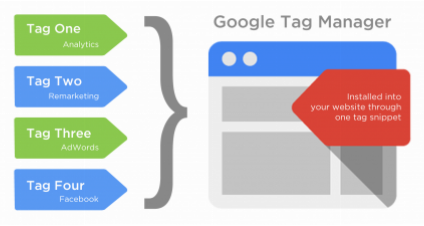Data Capture Tips for Digital Marketers
Technology is advancing daily and with that; we are utilizing these advancements to capture seemingly endless amounts of data. Look at companies like Nest, Uber and even Tesla; all three are not only revolutionizing our everyday lives with their products/services; but are also turning our everyday activities into trackable data points.
Why Data Capture Matters for Digital Marketing
What many consumers may not realize is that each action and interaction we have with these company’s apps, websites, or smart devices is paving the future for each of these companies and enabling them to grow.
Tesla for example, installed Autopilot hardware on every car it’s produced since October 2014, when Autopilot was still a pipe dream. Although the 1.3 billion miles of data may not have seemed extremely relevant in 2014, the race to produce an autonomous car has since picked up. Tesla now has a clear advantage over competitors like Google, General Motors and Uber.
Much like Tesla and its 1.3 billion miles of data, you too should be capturing as much data as possible from your website and paid advertising campaigns. A good data capture strategy will deliver high quality customer data, allowing you to better understand your customers and enhance your relationship with them. At the same time, giving you a leg up on your competition.
How to Capture Data in Google AdWords
Not everyone can have the same foresight as Tesla, but it is a good idea to track as much as you can, as soon as possible.
The good news is that without doing anything, the Google AdWords interface is set up to track a variety of ad specific metrics like Impressions, Clicks, CPC, CTR and so on. What it does not do out of the box, is track conversions. You will need to set up a conversion tracking code – also called a “tag” or “pixel” – to send conversion data from your website to Google.
Capturing conversion data is important in order to have full transparency into what visitors clicking on your ads are doing on your website after that first click. To set up conversion tracking on your website, follow the steps provided by Google here. Once you’ve set up your conversion tracking tag in AdWords, you will need to place the code or “tag” between the body tags (<body> </body>) of the page where the conversion takes place. To do this, you will need the ability to edit your website. After the tag is placed, you should be all set and your web page should be capturing conversion data. From there you can configure your AdWords dashboard to display only the information relevant to you and even export the information in a custom report. More on setting up tracking can be found here.
Utilize Data with Google Tag Manager and Analytics
The data available via Google AdWords is great, but sometimes, you just need more. This is where Google Tag Manager (GTM) and Google Analytics come in.
Tag Manager is an easy-to-install service offered by Google. GTM allows you to set up an interface to build “Tags” (also known as pixels) to track and evaluate visitor interactions on your site through Google Analytics as Events and Goals. Google Tag Manager can be used to display multiple sources of data in one centralized location. It is used to provide you with the most complete picture of your website traffic and advertising campaign data.
From here, you can build multiple “tags” in GTM that will allow you to:
- Track AdWords Conversions
- See website and conversion data in Google Analytics
- Track Facebook conversions and even remarket to customers who have clicked on your site/ad but did not convert.
This image provides a visual example of a Google Tag Manager account with four tags pulling data from four different data sources.

For more information on setting up and using GTM, please see our blog post 3 Reasons to Use Google Tag Manager.
Google Analytics is simply a free advanced web analytics service used to dive even deeper into the data captured from your website. This powerful tool allows you to keep your finger on the pulse of your business and provides you with significant insight into your customer base.
Google Analytics allows you to not only observe actions from a high level, but dive deep into your data to learn things like:
- What age group is buying your product
- Where your best customers/visitors are located in the world
- What keywords people searched to land on your website
By searching for and analyzing these trends, you can now have concrete data to influence and justify changes to your website/paid advertising accounts. By utilizing this data, you can quickly optimize your website/ads to lower your conversion costs and also, save your business money in the long run.
Data Capture Strategy Expertise at Charles River Interactive
In 2017, we at CRI predict data will only continue to increase in importance. We recommend you make it a new year’s resolution to avoid assumptions you can’t back up with data. Your starting point? Take the time to establish a clear data capture strategy.
At CRI, our Integrated Web Services team can help to harness the potential of data analysis and make recommendations for improvements along the way. And, together, we work closely with clients to properly set up tracking using the latest tools so our clients can collect as much data as possible, because much like Tesla, you never know when you will need it.
